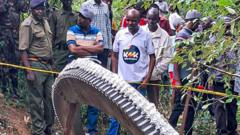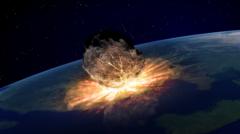Originally identified in 2004, Apophis was a source of fear due to its larger size and a surprising 2.7% chance of a 2029 impact. However, additional observations eventually confirmed that the risk over the next century had decreased to zero. In comparison, while 2024 YR4 is smaller, its potential for destruction should not be underestimated. The consequences of impact are heavily influenced by the entry point into Earth’s atmosphere.
While a direct hit would not wipe out a country, it carries the potential to severely damage or obliterate a city. The trajectory of 2024 YR4 predominantly lies over oceans, yet it could still affect large urban centers such as Bogotá, Lagos, and Mumbai. The destructive capability of an asteroid depends on its kinetic energy, which is a function of its mass at the high speeds typical of asteroids (approximately 38,000 miles per hour).
Astronomers currently possess limited data to assess 2024 YR4's mass, making it difficult to predict the exact level of devastation upon impact. “We don’t know how dense or porous it is, so its mass, and therefore the energy it would release if it strikes Earth’s surface or explodes in the atmosphere, is uncertain,” said Mark Boslough, a physicist from Los Alamos National Laboratory. Scientists continue to monitor the asteroid and gather data to better understand the risks it presents to Earth.
While a direct hit would not wipe out a country, it carries the potential to severely damage or obliterate a city. The trajectory of 2024 YR4 predominantly lies over oceans, yet it could still affect large urban centers such as Bogotá, Lagos, and Mumbai. The destructive capability of an asteroid depends on its kinetic energy, which is a function of its mass at the high speeds typical of asteroids (approximately 38,000 miles per hour).
Astronomers currently possess limited data to assess 2024 YR4's mass, making it difficult to predict the exact level of devastation upon impact. “We don’t know how dense or porous it is, so its mass, and therefore the energy it would release if it strikes Earth’s surface or explodes in the atmosphere, is uncertain,” said Mark Boslough, a physicist from Los Alamos National Laboratory. Scientists continue to monitor the asteroid and gather data to better understand the risks it presents to Earth.
















